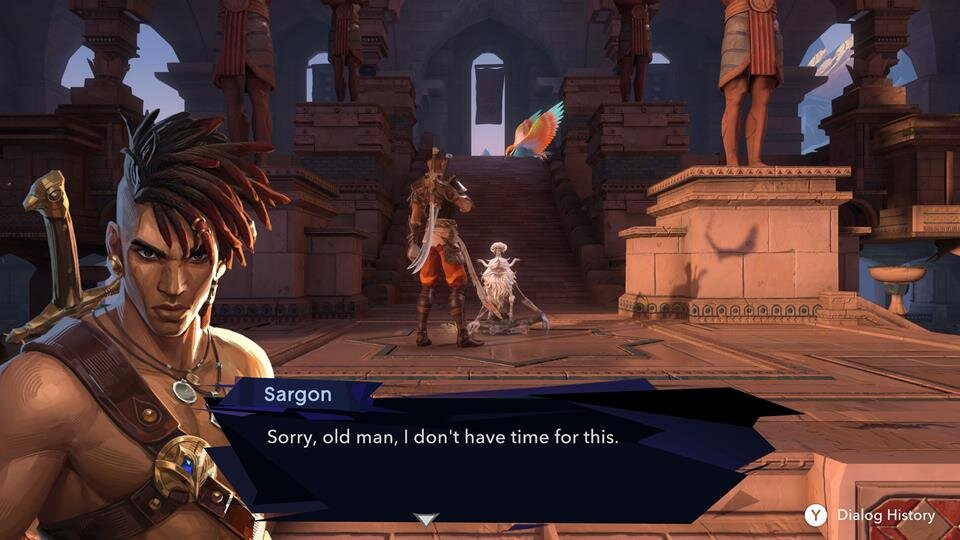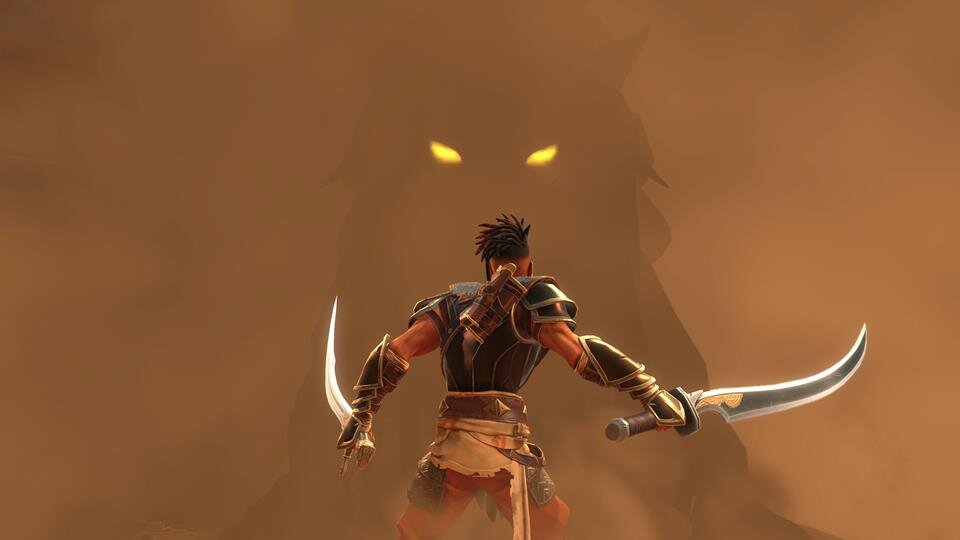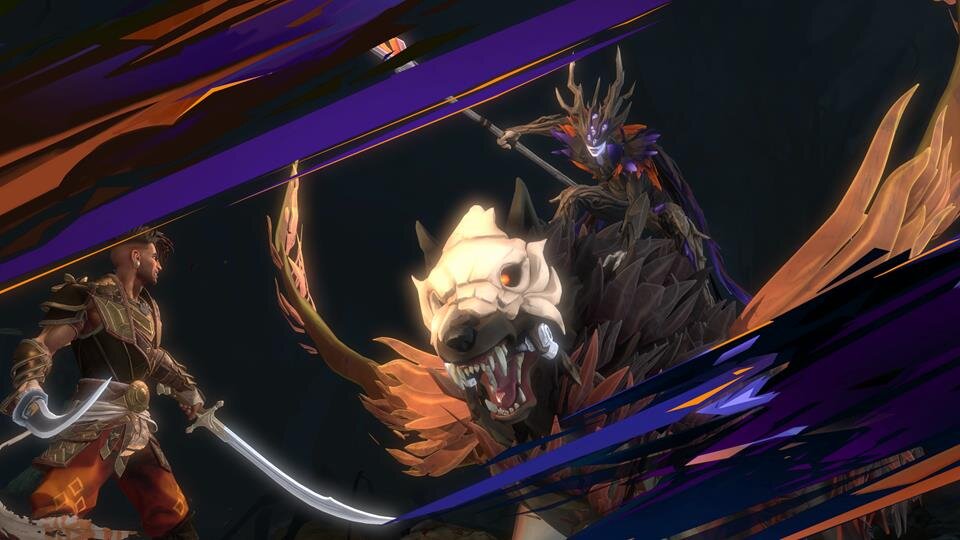For a certain generation of players, it may be easy to forget that Prince of Persia started life in the days of floppy discs and cinematic platformers. Ubisoft’s The Sands of Time casts a long shadow over the entire franchise, so much so that it was easier for the publisher to move on to their own historically-themed hidden blades than keep going after just seven years of time warping out of bottomless pits. The newly released Prince of Persia: The Lost Crown looks to split the difference between the roots of the series and Ubisoft’s vision while adding its own genre spin. A Metroidvania crafted with care by similar franchise-renewing Rayman Origins developers, Ubisoft Montpellier, The Lost Crown effortlessly proves itself to be much more than a nostalgia act.
Game Name: Prince of Persia: The Lost Crown
Platform(s): PS4, PS5, Xbox One, Xbox Series X|S (reviewed), Switch, PC
Developer(s): Ubisoft Montpellier
Publisher(s): Ubisoft
Release Date: January 18, 2024
Diamond in the Rough (Story)
Prince of Persia: The Lost Crown casts players as Sargon, a royal guard tasked with rescuing the titular Prince from an unfortunate kidnapping. Twists and turns abound as you and your fellow guardsman pursue the offending party into a labyrinth of time and space that holds many secrets. This unique setting allows The Lost Crown to throw in all manner of mystical Castlevania-esque enemies without really explaining much of the magical goings-on. There’s some digging you can do if you seek out hidden lore around the map, but the focus is obviously much more on delivering stylish combat at a regular pace.
As such, dialogue in The Lost Crown often feels perfunctory, serving just to move players from location to location in a manner that’s anything but memorable. You can see the inspiration of games like Hades in the character portraits, and it makes you wonder if the success of that game was one of the reasons why Prince of Persia returned in the first place. Outside of those, the few bits that do stick in the mind revolve around the Borderlands-esque boss fight introductions, but that’s partially due to the combat challenges wrapped around those moments. Really, The Lost Crown doesn’t even rise to the occasion of the minimalist storytelling provided by the genre’s forebears, and that’s a shame.
New Origins (Presentation)
All these story foibles can easily be forgiven in the moment because some of The Lost Crown’s more obvious strengths lie in its graphics and atmosphere. Whether you’re climbing through a desert temple, grumbling about a stereotypical sewer level, or approaching a wavering dimensional rift, the world of Mount Qaf feels like a painting come to life.
All this should come as no surprise considering how amazing Rayman Origins and its sequel set the stage graphically, and it’s delightful to see that detailed style applied to a game with a focus on fast-paced action. Sargon’s every sword swipe and artful dodge leaps off the screen thanks to a trail of particle effects and fluid motion. With the use of Marvel vs. Capcom-style super moves (and some other special occasions), backgrounds fade away, and the effects turn up to 11. It’s all very effective.
Flash of the Blade (Combat)
In fact, the only thing that tops The Lost Crown’s immaculate style is its fine-tuned combat mechanics. Sargon responds instantly to player input, flowing between dodges and slashes as if he were in the latest Devil May Cry. You can pull off some amazing maneuvers, both to avoid enemy attacks and dash past mobs entirely if you so choose. There is also some welcome customization thanks to the collectible amulets that can buff certain attacks or give you a second chance at life. It’s not enough of a system to say that you’re building out a character, but I did appreciate being able to recognize the attack patterns of certain bosses and boost the right maneuvers to give me an edge.
The player’s precise air control over their in-game avatar is also a welcome addition, giving The Lost Crown combat variety from the very first stage. Sargon’s moveset feels fully formed from the start, so each new addition is immensely exciting. You almost instantly know that there is more to come because of the impenetrable barriers and unscalable heights that the Metroidvania map throws in front of you. Still, each new power also aids in dispatching enemies and adding to the complexity of a deep system that never loses its luster.
Delving Too Deep (Exploration)
As far as the other side of the genre coin, Prince of Persia: The Lost Crown presents amusing platforming challenges and puzzles to traverse between combat arenas. It’s also nice that there is a wealth of accessibility options that include a set of portals to bypass the more complicated sections of this type after the first time through. The repetition of traversing some of these sections can get tedious for anyone who just wants to jump into the action. It can be easy to get lost even with the map being a button press away, and realizing you just performed a daring feat for the fifth time only to realize that you were going the wrong way is no one’s idea of a good time.

Time Is (Not) An Illusion (Final Thoughts)
While devoted fans of Metroidvanias will champion Prince of Persia: The Lost Crown as a Game of the Year contender for the next twelve months, there is definitely something here for fans just looking for a decent platformer or the next game to bear the name of Jordan Mechner’s creative opus. Even at times when I was frustrated with the game’s layout or sitting through an inconsequential story beat, I could see the quality of The Lost Crown shining through. This is how you deliver a game with 16-bit ambitions in a world of open worlds. Sargon’s tale is well worth the 20 hours it takes to devour it, and here’s hoping that this isn’t the last we hear from Ubisoft’s faraway kingdom in the near future.
Prince of Persia: The Lost Crown is currently playable on the PlayStation 4, PlayStation 5, Xbox One, Xbox Series X, Nintendo Switch, and PC.
Review Disclosure Statement – For more information on how we review video games and other media/technology, please review our Review Guideline/Scoring Policy.
Affiliate Link Disclosure: One or more of the links above contain affiliate links, which means we may receive a commission at no additional cost if you click through and purchase the item.
Prince of Persia: The Lost Crown Review
Summary




